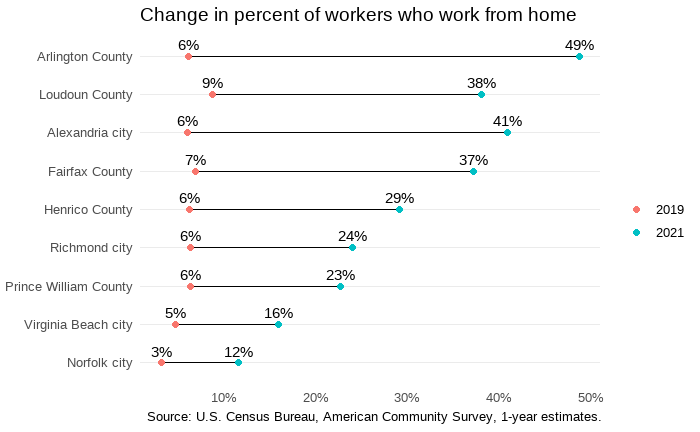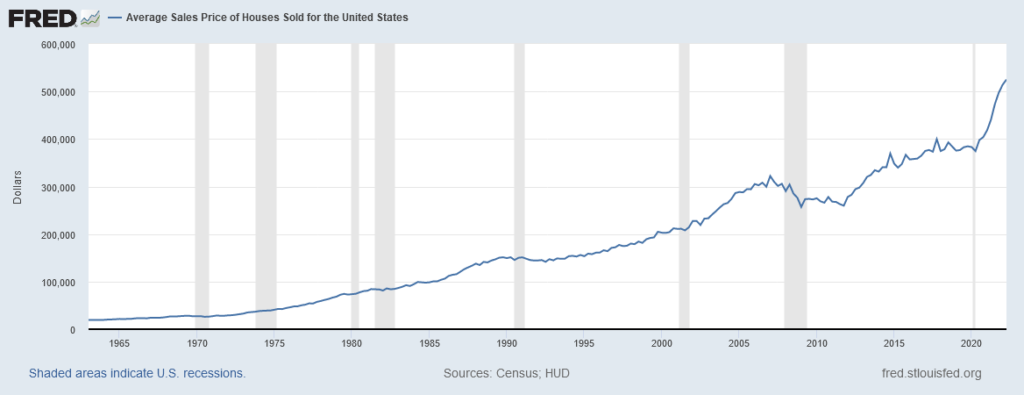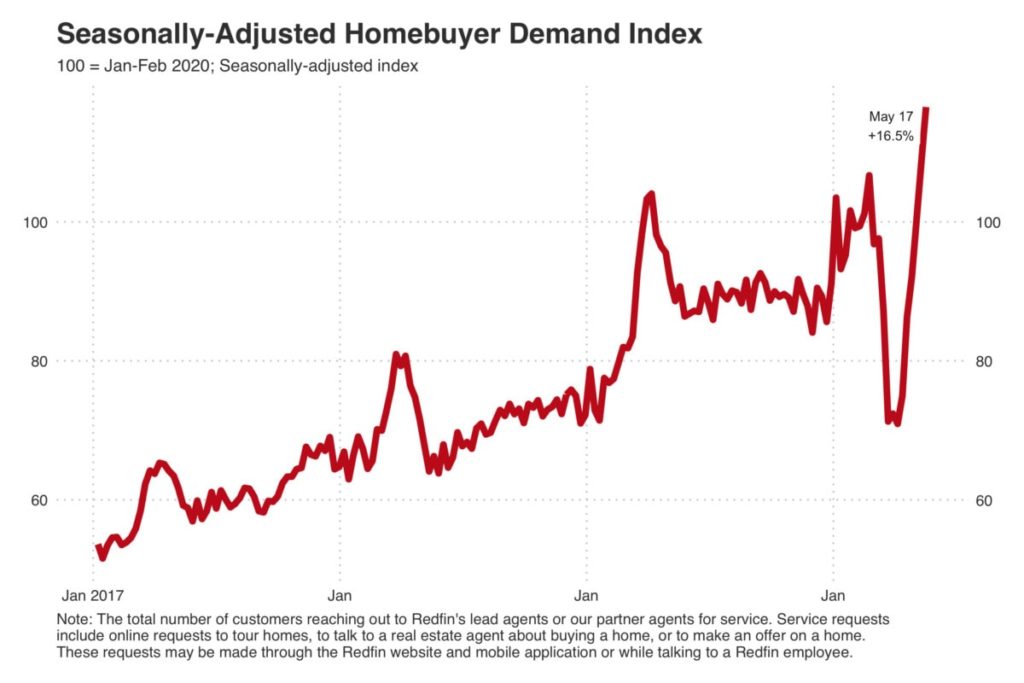The FWD #175 • 655 Words
The Fed says yes, but it’s always more complicated than that.
The San Francisco Federal Reserve Bank recently issued a research report that attributed 60% of the rise in home prices over the last two years to the increase in remote work thanks to COVID-19. They go on to say that “the fundamentals of housing demand have changed” and that remote work will “affect the future path of real estate prices and inflation”.
Whoa, there. That’s a lot of definitive claims about something very hard to measure! So let’s dig into their data and see why they are so certain.
Between 2020 and 2022 home prices increased 24% across the country. The last time an increase of this magnitude occurred over such a short period of time was… never. See for yourself in this home price data for the last 60 years.
This recent home price increase is largely attributable to an increase in demand. According to Redfin’s demand index shown in the chart below, there was a 16.5% increase in demand at the beginning of the pandemic which exceeded demand for the prior 5 years. This increase in demand was not met with a complementary increase in supply, which drove up housing prices.
What caused this increase in demand? Many economists said it was record-low interest rates during the first two years of the pandemic that allowed more potential homebuyers to exit renting and finally purchase a home. Age demographics were also said to play a part, as large numbers of younger adults hit the years in which they began to form households interested in purchasing a home.
This latest Fed report has a different interpretation. They claim that these demand-side factors are only responsible for about 40% of the increase in home prices over the last two years. The majority of the increase is instead due to households that migrated to lower-cost housing markets due to increased flexibility—and preferred home sizes—created by remote work.
This helps explain why, for example, real estate prices in Boise, Idaho increased so much more significantly than places like New York or San Francisco over the last two years.
So did that many households move to a new neighborhood, or completely new region, to accommodate a more luxurious remote work environment? And how can we tell that these purchasers influenced home prices in the places they purchased?
The Fed’s analysts looked at housing markets and metropolitan areas around the country that were “more exposed” to remote work—in other words, places that already had a decent amount of remote work happening pre-pandemic and were therefore prepared for more of it during the pandemic. This includes cities with a large number of tech jobs that can easily be done remotely. They observed that these markets saw much higher sales price and rent growth during the pandemic.

The analysts further measured migration into these markets and isolated the impact of migration on real estate prices. They removed the impact of other variables, such as interest rates and household formation, to determine that the remaining increase in prices is attributable to this migration.
This price influence isn’t just limited to for-sale homes—they also say it affected the rental housing market.
One of the report’s authors was “… pretty shocked remote work had this impact, once we saw the estimates.” Explaining further, they said, “We thought about how people moving to different locations would be important. And it is. But it is the people who are remaining in a metro area—the people who need more space at home if they work at home—that is really pushing up prices. That is the majority of the story.”
The researchers identified three features of these housing markets with high teleworking-induced demand: 1) predominant industries that are conducive to remote work, 2) low population density and relatively affordable housing stock compared to large metropolitan areas, and 3) warmer climates with “appealing lifestyles”.
Economic development departments, take note!


